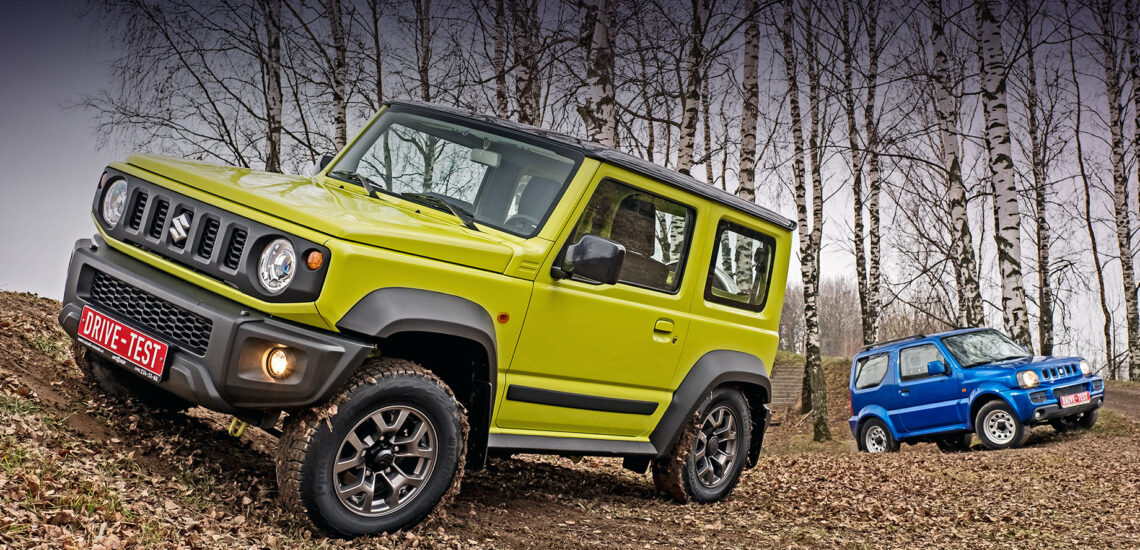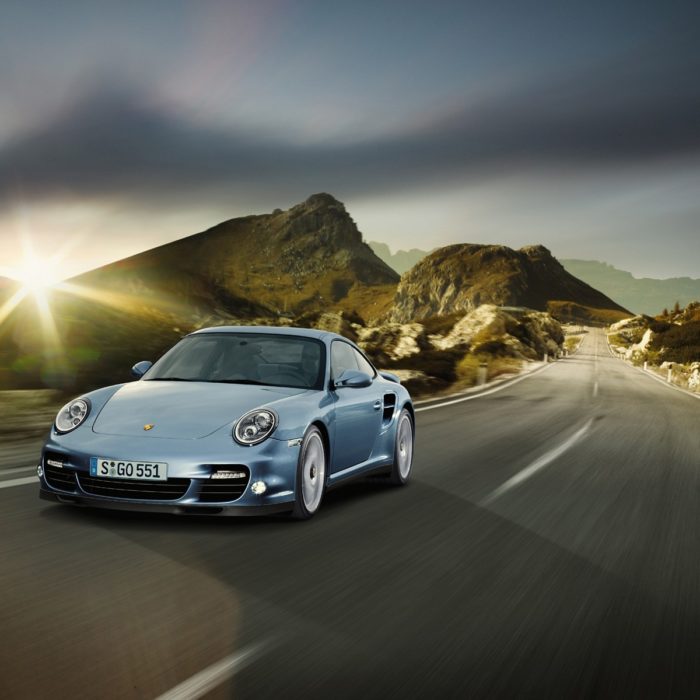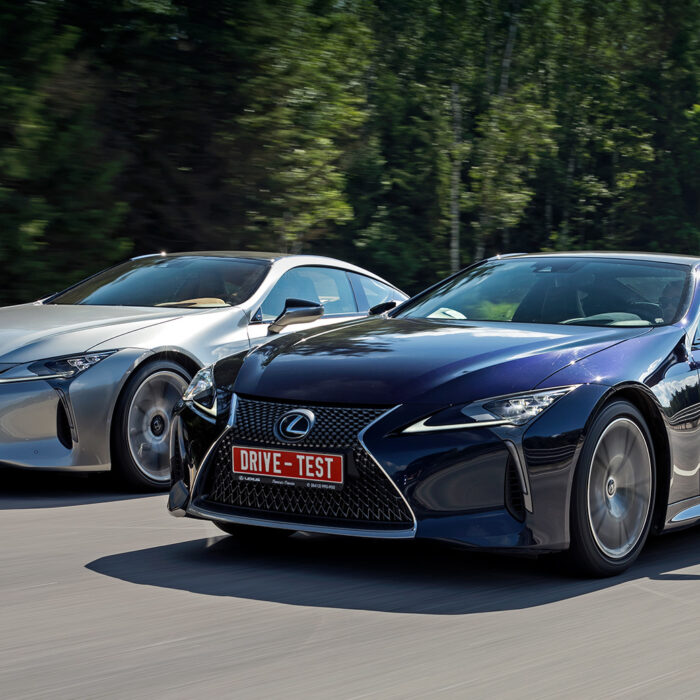A study of the technical characteristics of the new Suzuki Jimny is suspicious. The conservative design of the chassis with a spar frame and dependent axles does not seem to have changed, except that an anti-roll bar appeared at the rear. The wheelbase is identical to the previous generation. The same with brakes with non-ventilated discs on the front axle and drums on the rear. Even the automatic gearbox remained a four-speed. Is it really that a deep restyling is given out for a new generation? Let’s check.
We found a completely authentic Jimny of the last generation of 2007 with 49.709 miles on it. Bought new for $20,000, it has never changed hands — even the tires are still original! The first round of the duel — the battle of designs — remains with the new Jimny. Having remained almost in the same dimensions, this “man” has grown prettier and mature — so much so that passers-by turn their necks. Massive unpainted arches, vertical windows, imitation of gaps between the bumpers and the body (in fact, everything is tight there) — the brutality of the off-road image rolls over.

But the interior is cooler! The front panel with a massive handrail and the devices “bolted” to it invariably cause an admiring “wow” among passengers. The design skillfully emphasizes functionality — large buttons, for example. It is far from immediately noticeable that there is not a single soft panel in the cabin, and the fitting of the elements is not ideal everywhere. If in the old car the plastic covered all the metal, here the frames of the rear windows are bare. The door panels that are not covered to the bottom are embarrassing — will it not be cold in winter?
Transfer control returned to a mechanical lever. Experienced owners rejoice — the “push-button” electric drive of the off-road sometimes failed due to wiring damage. Although, the handle, coupled with a mechanical handbrake, eats up space in the cabin: there are now only two cup holders, and both are moved back. The glove compartment and door pockets remained modest. In fact, there is no trunk — the back seat was shifted 1.5 inches back, and now not every backpack will fit behind the backs. Places for people, however, did not become much — Jimny remained in fact a car for two. Still, with a length without a spare tire of only about 11.4 feet…
But the driving position leaves no doubt: the interior has been thoughtfully re-arranged. The old Jimny is frankly tight for the driver. The chair is too high, there is no way to move back, the left hand has nowhere to go but to cling to the cold glass. In the new one, the seat also has only two adjustments, and the backrest changes position in steps, but how much more comfortable it is to sit on a pillow lowered by 1.18 inches! There was an opportunity to correct the position of the steering wheel in height, but the main thing is that the left leg and arm are no longer pressed up. In the old Jimny, the landing is more convenient than in the Duster! Only the right leg suffers from contact with the edge of the platform, on which the selector of the automatic gearbox is located.
The view from the driver’s seat is unusual, although the theme of the narrow windshield between the vertical pillars is more reminiscent of a Jeep Wrangler or a Mercedes G-Class than a heritage motive. As long as the windows are clean, you can see everything around. Still, here they are, the corners of the body — it seems that you can reach out with your hand. You don’t remember the absence of parking sensors or a rear-view camera, and the heightened sense of dimensions on the road is especially convenient. In the mud, it turns out that the windshield cleaning sector is narrow, and all the reagent mucus from winter highways appeared on the flat rear window.
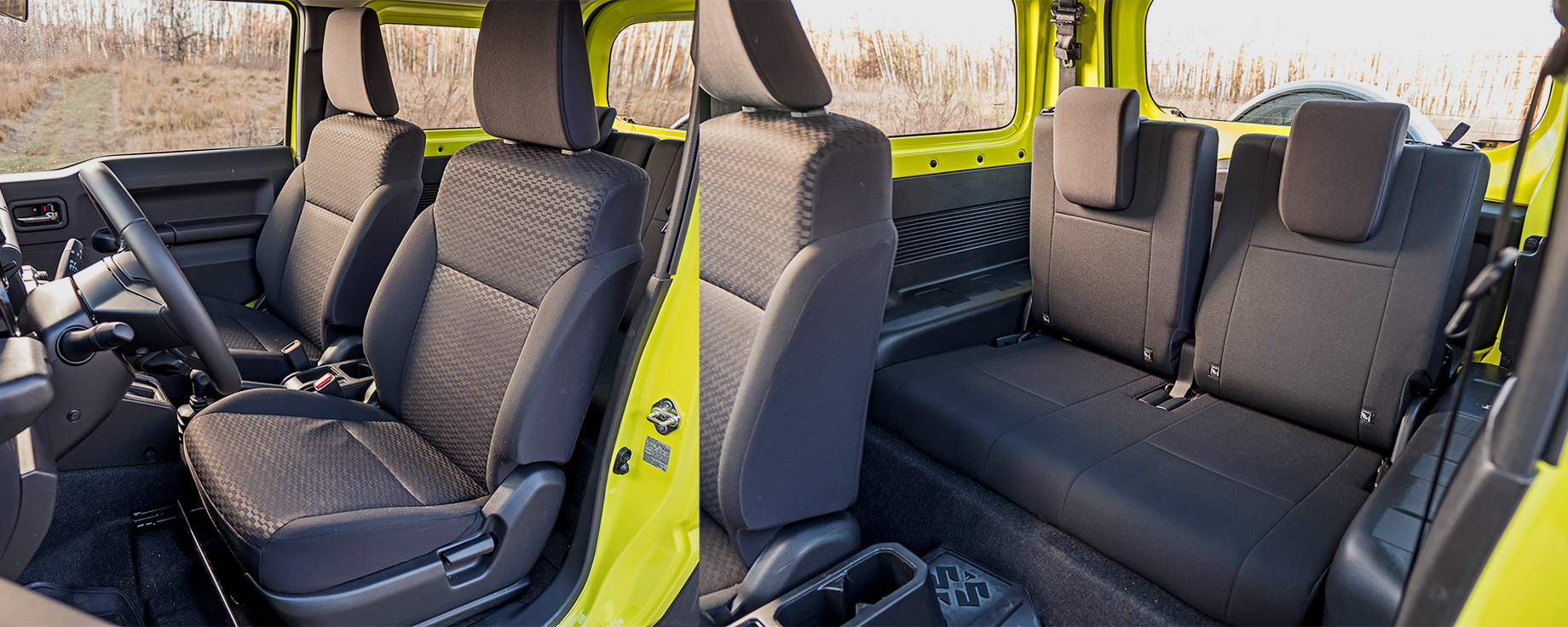
Under the hoods of the old and the new cars, we actually found nothing in common. The engine shield, the location of components and assemblies — everything has been redesigned! And turning the key in the ignition confirms that the engine is completely different. The all-new aspirated engine 1.5 comes to life without vibration and literally whispers at idle. The straight groove of the gearbox selector requires attention: it is easy to slip past the D position into 2 or L. By the way, the fourth gear off button (Overdrive off) has also been preserved on the knob, and when braking, you can actually poke any gear manually.
It will come in handy more likely on off-road, because in the city Jimny is surprisingly cheerful without any “cheering”. The machine switches quickly and at the right time. At speeds up to 55-60 mph, there is no former feeling of lack of dynamics. The motor is only 100 hp, but you press the pedal and go! Alas, until I got out on the highway… It is still possible to maintain 60-70 mph, but there is no longer a margin for overtaking. Acceleration to a maximum of 90 mph is long and difficult, and in this new generation is not much better than the old one. The brakes are just as unsure: as long as you press lightly, everything seems to be normal. But if you press harder, the pedal goes down, and Jimny only bows, slowing down reluctantly.
If the old Jimny leapt on a rigid suspension, transferring blows to the steering wheel as well, then the new one is much more comfortable. Small bumps melt away in higher profile tires (and the rare 195/80 R15 size). Medium bumps smooth out “loose” springs and shock absorbers, and the steering wheel, thanks to a damper and an electric booster, instead of a hydraulic one, behaves calmly. Course stability, however, did not appear — Jimny shied away from the spikes in the asphalt on the ruts and rearranged with side gusts of wind.
The short-wheelbase chassis on bridges with Panhard rods also passes in turns. Early slips, rolls, delayed responses to the turns of the steering wheel with a weak-willed reactive action — everything is almost the same as it was. Even the number of revolutions from lock to lock remained the same — 4.2. Moreover, it became harder to quickly turn the steering wheel in the parking lot. It seems to be due to the same damper. And if you also remember that you spend most of your time on rear-wheel drive… After all, all-wheel drive still turns on only hard. Perhaps it’s even good that the winter turned out to be snowless and the roads are non-slip…
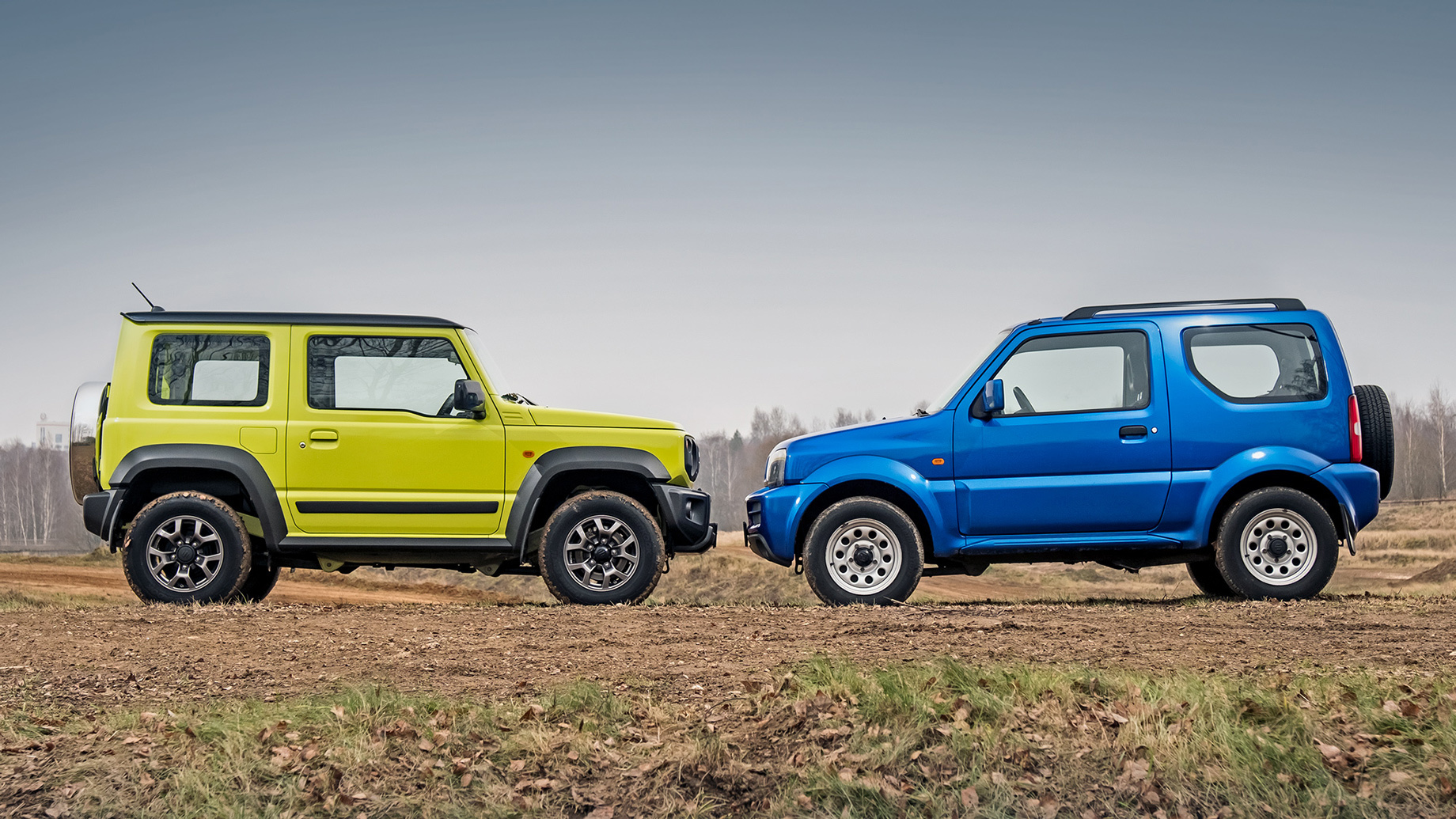
There are two main off-road news. Jimny increased the clearance under the beams of the bridges by 0.5-0.7 inches thanks to plumper wheels and got electronic assistants. Previously, the driver could only rely on himself, although finding an understanding with the old Jimny is surprisingly easy. It rides through the mud accurately and predictably, and even the automatic box does not greatly interfere with finely dosing traction. The unique geometry with an almost complete absence of overhangs is intoxicating: it seems that you can drive into a vertical wall and get over any moat. The main thing is not to tumble sideways, because the track is narrow.
The new Jimny goes through gullies more seriously, more weightily. A supple suspension tunes for a more measured style. But everything is alright with energy intensity. The worse thing is, the course stability is not the same — on more spiked winter tires, the new Jimny crawls to the side in the mud more often than the old one on the bald “all-season”. The increase in clearance is noticeable: in a rut you drive more boldly. And electronics radically changes the tactics of driving.
As long as the downshift is not engaged, in any conditions you can safely press the gas pedal to the floor — perfectly tuned imitations of wheel locks and an anti-slip system will manage. The latter seems to turn off, but turns on again at a speed of only 18 mph — in fact, at the first slip. There is no longer any “traction” on the lowered one, but the cross-wheel “locks” work. Jimny has remained a source of off-road bliss, and pleasure is now available not only to seasoned jeepers, but also to their wives and girlfriends, for example.
I don’t want to go back to asphalt. After all, there again you have to put up with bridges oscillating on soft shock absorbers, jumping on ruts, listening to the constant howl of a transfer case at city speeds… Jimny has become quieter, especially its engine, but if at 60 mph it already gets out to 3000 rpm, then completely quiet it cannot be by definition. Isolation from noise from the street and the sound of sandblasting in the arches is clearly worse than in the average crossover.
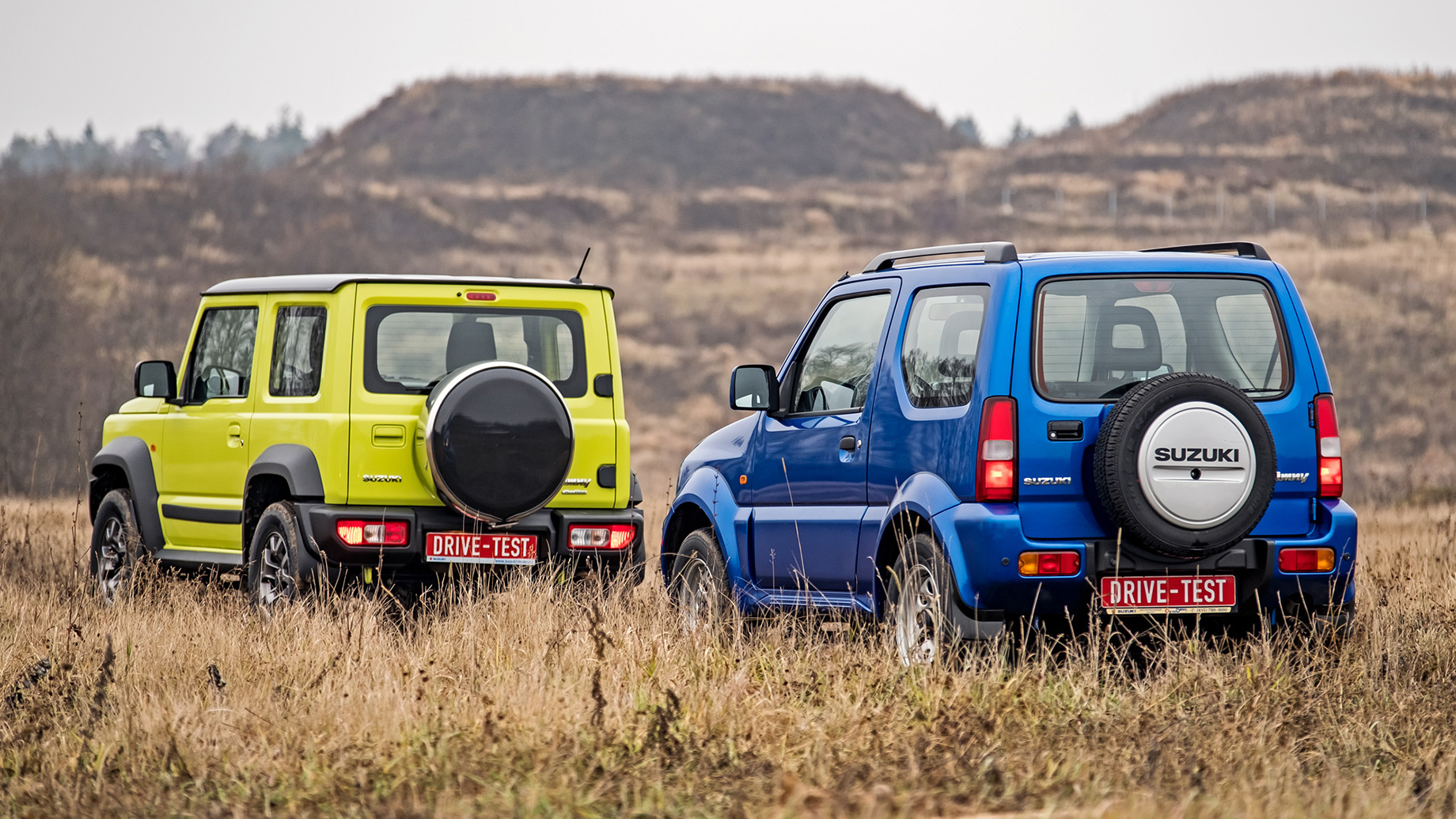
The beauty of the Jimny, though, is that it’s far from the average. The only thing Suzuki could borrow from the world of crossovers is an all-wheel drive system suitable for everyday driving. Spending the whole winter wondering if it’s slippery enough now to connect the front axle with a tight handle, or if you need to save the transmission, is a so-so pleasure. Jimny’s alter ego is just a frame Wrangler or UAZ Patriot with a similar “part time”, and not a G-class, which, with a retro appearance, rides almost like a passenger car.
What reserves the Japanese were able to draw from the frame concept causes immense respect. The new car will not leave any owner of the old Jimny indifferent — what was required has been improved. And how many new hearts will this cutie win! I really want to look back at it in the parking lot! The main thing at these moments is not to think about the price tag: any crossover for the same money will be richer, more spacious and faster. But not everyone is destined for a place in the pantheon of automotive history. Like Jimny.
This is a translation. You can read the original here: https://www.drive.ru/test-drive/suzuki/5e172accec05c4f26a000129.html

Published March 23, 2023 • 8m to read

